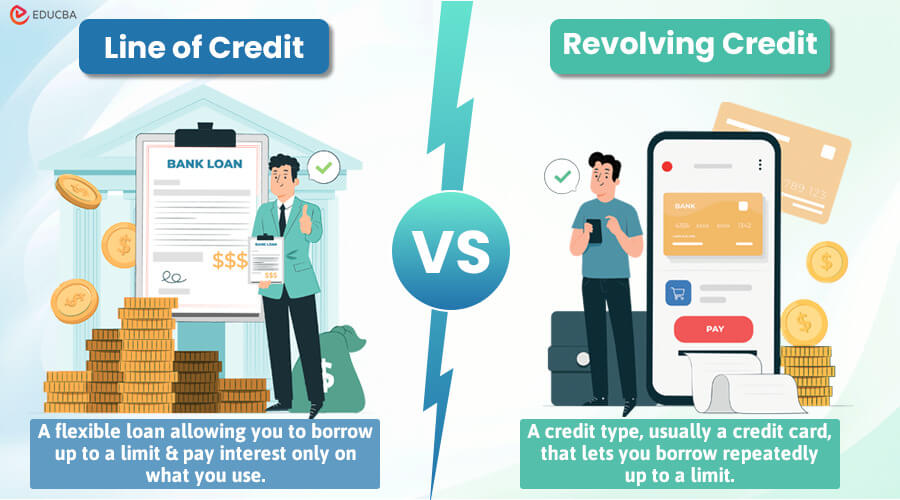Introduction to Line of Credit vs Revolving Credit
Access to capital can be the defining factor between a successful business and a struggling one. Regarding managing urgent expenses or maintaining daily cash flow, two popular financing options are Line of Credit and Revolving Credit. When evaluating Line of Credit vs Revolving Credit, it is important to consider how each option aligns with your business’s financial needs, as both provide flexible funding but cater to different types of expenses. In this article, we will break down the key differences between a line of credit and revolving credit, helping you decide the best fit for your small business.
Understanding Line of Credit
A line of credit is a flexible loan from a bank that allows you to borrow a set amount of money whenever you need it. You only pay interest on the amount you use, and once you repay, you can borrow again up to the limit. This makes a business line of credit useful for covering unexpected costs or managing cash flow.
Understanding Revolving Credit
Revolving credit is a type of borrowing that allows you to repeatedly access a certain amount of money. You can borrow up to a certain limit, pay back what you owe, and then borrow again. It often comes in business credit cards, which have a set credit limit and require minimum monthly payments. This type of credit is best for smaller, ongoing purchases, making it convenient for everyday expenses. However, interest rates can be higher for revolving credit than other financing options.
Key Differences: Line of Credit vs. Revolving Credit
| Criteria | Line of Credit | Revolving Credit |
| Usage Purpose | Best for larger expenses like inventory purchases, expansions, or seasonal demands | Ideal for daily operational costs, smaller purchases like supplies or advertising |
| Interest Rates | Lower interest rates, especially for secured lines of credit | Higher interest rates that can accumulate quickly if not paid off regularly |
| Repayment Flexibility | Flexible repayment, with interest charged only on the amount used | Minimum monthly payments are required, with interest on the outstanding balance |
| Access to Funds | Suitable for large funding needs with access to the entire approved limit | Designed for smaller ongoing purchases within the credit limit |
| Credit Type | Often secured, may require collateral depending on lender terms | Typically unsecured, like a business credit card, usually without collateral |
| Best For | Managing cash flow for large projects, covering seasonal fluctuations, or investing in growth | Handling regular operational expenses and smaller recurring business costs |
Which Option is Best for Your Business?
Choosing between a line of credit vs revolving credit depends on your business’s financial needs.
- If you need funds for larger short-term projects or growth opportunities, a line of credit provides lower interest rates and more flexibility. It is a practical tool for businesses needing substantial but occasional cash flow support.
- On the other hand, if your business requires access to quick cash for smaller, everyday expenses, revolving credit may be a better fit. It is more accessible, though the higher interest rates should be considered carefully.
For startups, it is crucial to evaluate both options. A line of credit often has stricter eligibility criteria, whereas revolving credit is easier to obtain but comes with higher costs.
To make the best decision, align the funding method with your business goals, ensuring you can repay the borrowed amount efficiently.
Final Thoughts
Comprehending the differences between line of credit vs revolving credit helps small business owners choose the most suitable financing option. Both provide flexible funding solutions but are designed for different needs. A line of credit supports larger, less frequent expenses while revolving credit is more suited for daily operational costs.
Before deciding, evaluate your business’s cash flow, expenses, and borrowing capacity. Considering each option’s advantages, you can secure the financial support your business needs without compromising its financial health.
Recommended Articles
We hope this article on line of credit vs revolving credit helps you. Check out these recommended articles for more insights and tips on choosing the right financing options for your business’s financial success.




